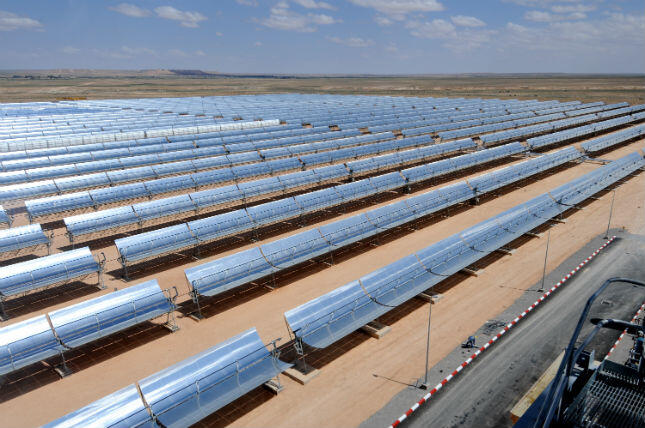Climate change can undermine stability in the Middle East and North Africa, where both the United States and Europe have critical foreign policy and security interests. The Middle East and North Africa (MENA) region “is impacted by climate and resource scarcity risks now, in the medium, and in the long term,” said Nick Mabey, director and chief executive of the environmental think tank E3G, during a recent Wilson Center event on building climate resilience in MENA countries. “It’s a region that is highly vulnerable to climate change,” said Mabey, and “also incredibly vulnerable to global systems.”
Operating in a Climate-Changed World: Evolving Risks in the MENA Region
Climate impacts like extreme droughts and heat waves—in combination with population growth, natural resource scarcity, and migration—pose significant socio-economic risksfor countries in the MENA region. Climate-induced insecurities, for example, can increase susceptibility to price shocks and social stresses. “We saw, in the 2008 food and fuel crisis, how spikes in prices and changes in availability can very quickly lead to social instability,” said Mabey. It’s likely that such shocks will happen again as climate impacts intensify, he said, which makes building social, economic, and physical resilience increasingly urgent in these areas.
Inevitable shifts in oil demand are a particularly challenging problem for MENA countries that rely on fossil fuel exports for income, such as Saudi Arabia, Qatar, and Kuwait. As a consequence of decarbonization policies, “oil prices will be depressed and consumption capped,” said Mabey. While these countries have significant opportunities to develop solar power technologies, diversifying will require fundamental political reform in countries where the political and economic systems revolve around fossil fuels, he said.
In pursuing transformative policies in MENA, we need “to recognize that we are operating in a climate-changed world,” said Sherri Goodman, a senior research fellow with the Wilson Center. Goodman, also a former defense official, said that we need preventative defense measures that anticipate and mitigate exacerbated risks to avoid insecurity driven by food, water, and energy scarcities. “The transition to a more energy-secure and more diversified region, I think, is one of the most important ways that we can invest and seek advantages,” she said. Rather than focusing on the threats, this is an opportunity to “use our climate awareness [and] our ability to innovate.”
Engineering Resilience
Countries can’t “grow their way to resilience,” said Mabey. E3G’s research in Egypt and Tunisia shows that the MENA region will need more than money to avoid climate-induced instability. Instead, deliberate interventions can build stability and “improve resilience in a way we can observe,” he said. The question is, “how do you deliver some of the clever ideas that are easy to come up with on paper, but quite hard to do in practice?”
The European Investment Bank (EIB) is focusing on practical projects to enhance climate resilience in MENA, said Carlota Cenalmor, who is EIB’s deputy head of office and senior institutional advisor. For example, the EIB’s Economic Resilience Initiative, which is supported by EU member states, mobilizes financial support for projects that improve infrastructure, strengthen the private sector, encourage job growth, and address migration issues.
“In order to make a change in terms of climate… the project cycle is crucial,” said Cenalmor. In addition to allocating funds, EIB works with engineers to offer technical advice in the design phase of the project. This way, EIB can mainstream climate concerns into project from the beginning while also incorporating local insights. EIB’s partners are “on the ground talking to the governments, talking to the people there, talking to the NGOs, talking to everyone, to make sure we are getting to where the needs are,” said Cenalmor. The goal is to “get the money going in the right direction.”
A Transatlantic Dialogue: Diplomacy and Resiliency
Europe and the United States share vital interests in stabilizing the MENA region; they both want to mitigate cross-border migration and avoid the economic and social stressesthat may lead to instances of violence and foster radical extremism.
Since the first Persian Gulf War, Europe and the United States have significantly expanded their military presences in the region. However, going forward, soft power tools could become more essential for building economic, environmental, and social resilience that prevents insecurity, said Goodman. We should aim to strengthen transatlantic institutions that can generate cooperative, diplomatic approaches to building resilience across MENA communities, she said: “It’s not all about hard power.”
It makes sense for the United States and Europe to combine resources to fulfill their common interests, said Mabey, calling for more dialogue between the United States and the European Union on climate resilience in the MENA region. The forum should be similar in sophistication and commitment to the current joint efforts to tackle extremism in the area, he said: “Shared alignment of approach and analysis needs to be the seed of how we move forward.”
Source: http://bit.ly/2AKS6oQ











